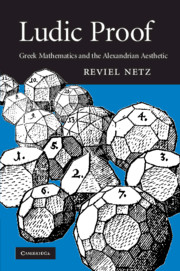Introduction
Published online by Cambridge University Press: 29 July 2009
Summary
So this book is going to be about the style of mathematics. Does it mean I am going to ignore the substance of mathematics? To some extent, I do, but then again not: the two dimensions are distinct, yet they are not orthogonal, so that stylistic preferences inform the contents themselves, and vice versa. For an example, I shall now take a central work of Hellenistic mathematics – Archimedes' Spiral Lines – and read it twice, first – very quickly – for its contents, and then, at a more leisurely pace, for its presentation of those contents. Besides serving to delineate the two dimensions of style and content, this may also serve as an introduction to our topic: for Spiral Lines is a fine example of what makes Hellenistic science so impressive, in both dimensions. For the mathematical contents, I quote the summary in Knorr 1986: 161 (fig. 1):
The determination of the areas of figures bounded by spirals further illustrates Archimedes' methods of quadrature. The Archimedean plane spiral is traced out by a point moving uniformly along a line as that line rotates uniformly about one of its endpoints. The latter portion of the treatise On Spiral Lines is devoted to the proof that the area under the segment of the spiral equals one-third the corresponding circular sector … The proofs are managed in full formal detail in accordance with the indirect method of limits.
- Type
- Chapter
- Information
- Ludic ProofGreek Mathematics and the Alexandrian Aesthetic, pp. 1 - 16Publisher: Cambridge University PressPrint publication year: 2009



